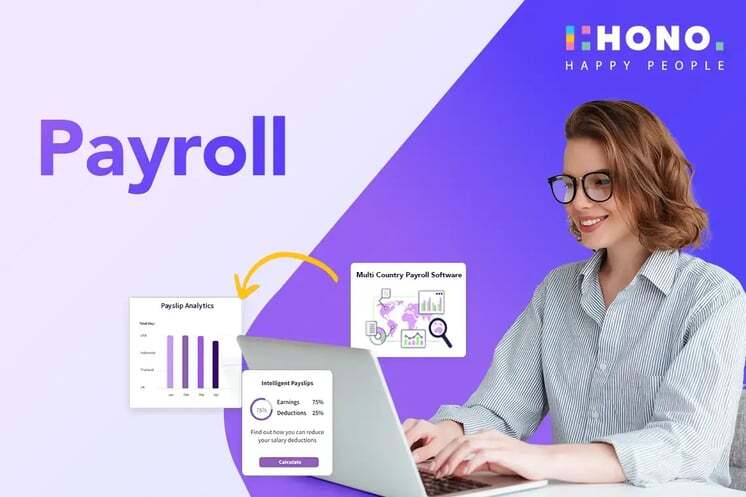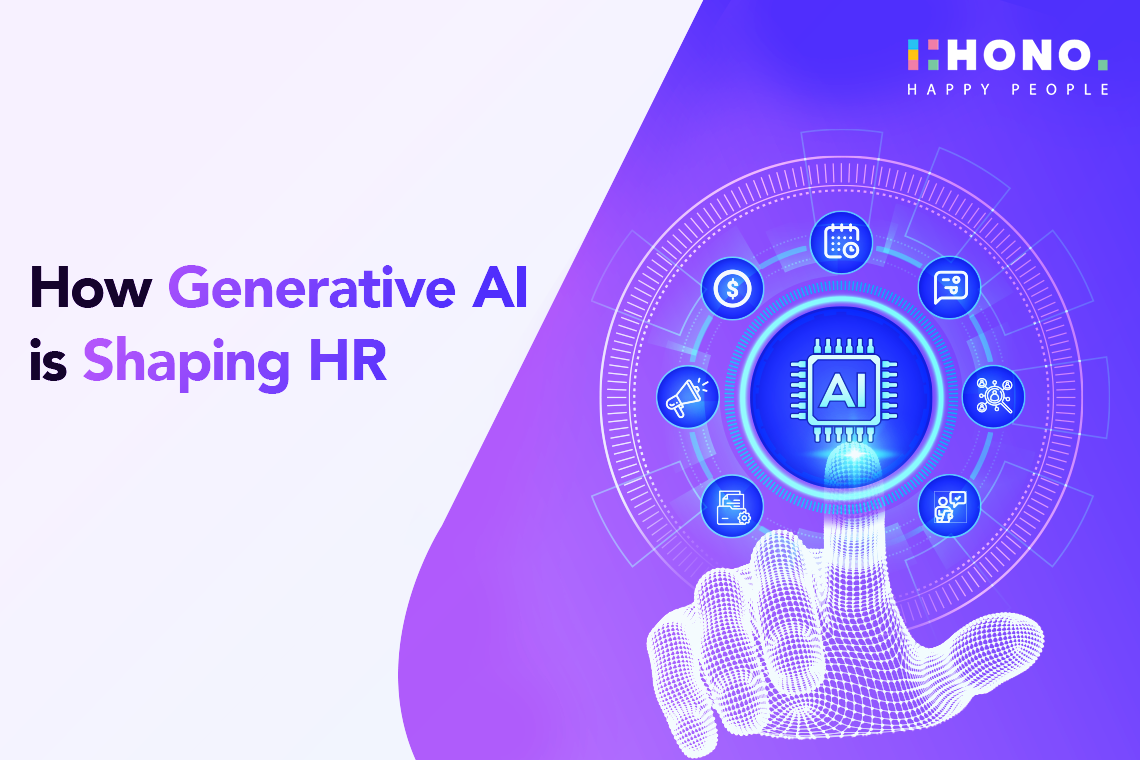What Are The 4 E's of Employee Engagement in HR
The Essential Elements of a Thriving Workforce
Engaged employees are 87% less likely to leave their current company. Each "E" in the 4 E’s of employee engagement — Enable, Empower, Engage and Encourage — contributes significantly to cultivating a positive and productive workplace culture to maximize the retention of top performers.
Enablement ensures that employees have access to the necessary resources, tools, and support systems to perform their best and achieve their goals effectively. Empowerment involves granting employees autonomy, trust, and decision-making authority, empowering them to take ownership of their work and contribute to organizational success. Engagement emphasizes creating a supportive and inclusive environment where employees feel valued, connected, and motivated to perform at their peak, ultimately driving overall workforce satisfaction and performance. Encouragement focuses on providing employees with meaningful work and growth opportunities, fostering their sense of purpose and fulfillment. Let’s take a deeper look into each “E”:
Enablement
Key strategies to equip employees with the skills and resources they need to succeed:
Offer comprehensive onboarding programs to ensure smooth integration into roles and responsibilities.
Provide access to learning and development platforms for continuous skill enhancement and career growth.
Establish mentorship programs to facilitate knowledge transfer and support professional development.
Energy
83.6% of employees feel that recognition motivates them to succeed at work. Recognizing and rewarding employee contributions is integral to fostering a positive work environment. When employees feel valued and appreciated for their efforts, they are more likely to feel motivated and engaged in their work, increasing productivity, innovation, and overall job satisfaction to drive organizational success and retention of top talent. It can include verbal praise, awards, bonuses, or other incentives tailored to individual preferences. Additionally, providing opportunities for employee feedback and involvement in decision-making processes can further enhance their sense of belonging and contribution to the organization.
How HR software can streamline recognition programs and celebrate employee achievements.
Automated Recognition: HR software automates the process of recognizing employee achievements, ensuring timely acknowledgment.
Customizable Awards: Software offers customizable awards tailored to individual preferences, enhancing the personal touch of recognition.
Social Recognition: Platforms within HR software facilitate public acknowledgment, fostering a culture of appreciation and collaboration.
Integration: Seamless integration with performance management systems aligns recognition with employee goals and outcomes.
Analytics: HR software provides analytics to measure the impact of recognition programs, enabling data-driven decision-making for continuous improvement.
Empowerment
Empowerment in the workplace entails granting employees the autonomy to make decisions and take ownership of their tasks, fostering a sense of responsibility and accountability. By providing opportunities for self-direction and decision-making, organizations empower employees to contribute meaningfully to their work and overall goals. This approach not only enhances job satisfaction and motivation but also cultivates a culture of innovation and agility. Empowerment is a cornerstone of employee engagement, driving organizational success through increased productivity, creativity and adaptability.
How modern HR software assists goal setting and performance management processes that focus on empowerment:
Goal Alignment: HR software enables employees to align personal goals with organizational objectives, fostering a sense of purpose and direction.
Transparent Feedback: It facilitates regular performance evaluations and feedback loops, empowering employees to track their progress and make informed decisions.
Self-Service Tools: Employees can access performance data and set goals independently, promoting autonomy and accountability.
Skill Development: HR software offers personalized learning resources tailored to individual goals, empowering employees to acquire new skills and advance their careers.
Recognition Features: It includes features for peer-to-peer recognition and rewards, empowering employees to acknowledge achievements and contributions, and fostering a culture of empowerment and appreciation.
Encouragement
Encouragement, as an element of the 4 E's of employee engagement, involves offering regular feedback and constructive criticism while fostering a culture of open communication and support. By providing employees with constructive feedback, managers empower them to recognize areas for improvement and strive for excellence. This practice not only enhances individual performance but also contributes to overall team success. Moreover, creating a culture of open communication cultivates trust and transparency within the organization, enabling employees to voice their opinions, concerns, and ideas freely. As a result, employees feel valued and appreciated, leading to higher levels of motivation, job satisfaction, and ultimately, greater employee engagement.
How HR software can foster communication between employees and managers
Real-time messaging: HR software facilitates instant communication between employees and managers through chat functionalities, enabling quick exchanges and collaboration.
Performance feedback tools: These tools allow managers to provide timely feedback to employees on their performance, fostering communication and continuous improvement.
Virtual meetings: HR software offers virtual meeting capabilities, enabling remote or dispersed teams to connect and communicate effectively.
Feedback surveys: Software features enable managers to collect feedback from employees through surveys, promoting two-way communication and engagement.
Employee portals: HR software provides centralized platforms where employees can access information, submit queries, and communicate with managers, enhancing transparency and communication channels.
Also read: Understanding Employee Engagement Metrics: What You Need to Know
Building on the Essentials of the 4 E's of Employee Engagement in HR
Here are some key actionable strategies for implementing each "E" within your organization effectively and effortlessly:
Enablement:
Offer targeted training programs to enhance skills and knowledge.
Provide access to resources for self-directed learning.
Align tasks with employees' strengths and interests for better engagement.
Energy:
Recognize achievements publicly to boost morale.
Encourage regular breaks and promote work-life balance.
Foster a positive work environment with team-building activities.
Empowerment:
Delegate decision-making authority to teams.
Support employee initiatives and innovative ideas.
Encourage autonomy in task management and goal setting.
Encouragement:
Establish regular feedback sessions for constructive criticism.
Implement peer recognition programs.
Create a culture of appreciation through acknowledgment platforms.
Also read: Employee Engagement in HR: A Comprehensive Guide to Understanding and Enhancing Workplace Morale
The Role of HR Software in Employee Engagement
Enablement: HR software offers learning management systems for ongoing skill development, personalized training modules, and access to resources.
Energy: Recognition platforms within HR software facilitate peer-to-peer recognition, rewards, and gamification to boost morale and motivation.
Empowerment: Performance management tools enable goal setting, feedback loops, and self-assessment for employees to take ownership of their growth.
Encouragement: Communication features like chatbots, feedback tools, and virtual collaboration spaces foster open dialogue, support, and a positive work culture.
Engagement: Employee engagement surveys and sentiment analysis tools help gauge satisfaction, identify areas for improvement, and measure the impact of engagement initiatives.
HR software serves as a centralized platform for various HR functions, enabling professionals to manage tasks such as payroll, attendance tracking, and recruitment efficiently. By automating these repetitive processes, HR professionals save considerable time and resources. Moreover, HR software streamlines data management, providing easy access to employee information and facilitating compliance with regulations. Additionally, it offers self-service options for employees, reducing administrative burdens on HR teams. To stay ahead and enhance workforce productivity, accuracy and compliance, next-gen HR software is the answer, allowing HR professionals to focus on strategic initiatives and fostering employee engagement.
The 4 E's framework, focusing on Enablement, Energy, Empowerment, and Encouragement, is crucial for HR professionals as it provides a comprehensive approach to fostering employee engagement. HONO advanced HR tech solutions help HR leaders prioritize these elements to master the evolving metrics of employee engagement. HR professionals can create a work environment where employees feel equipped, motivated, empowered, and supported, leading to increased productivity, innovation, and retention. Ultimately, prioritizing employee engagement through the 4 E's framework contributes to overall business success by enhancing performance, satisfaction, and organizational culture.
Schedule a Demo Now!

.png?width=70&height=70&name=Team%20HONO%20logo-01%20(1).png)








.jpg)
